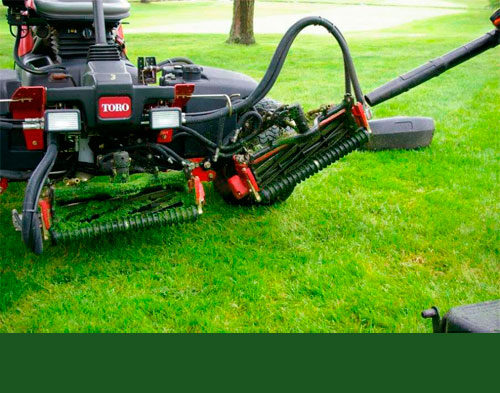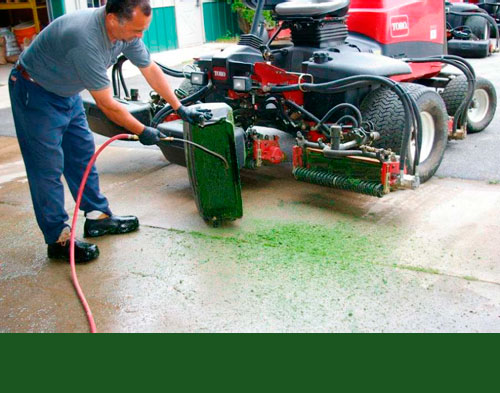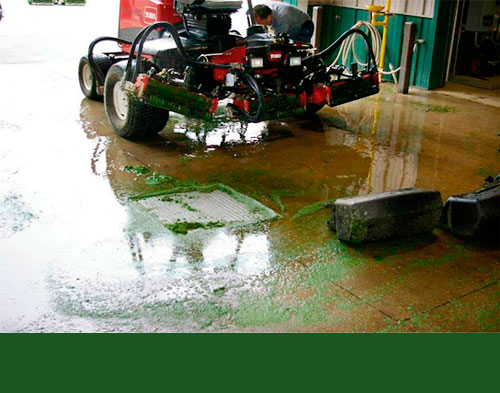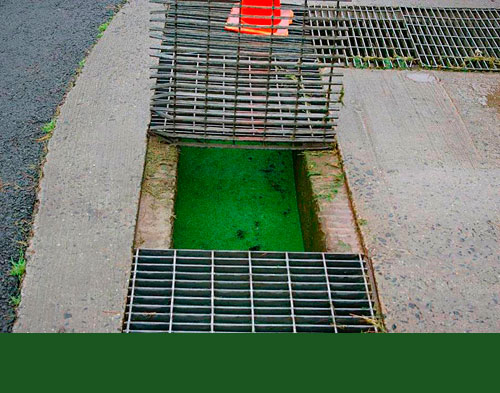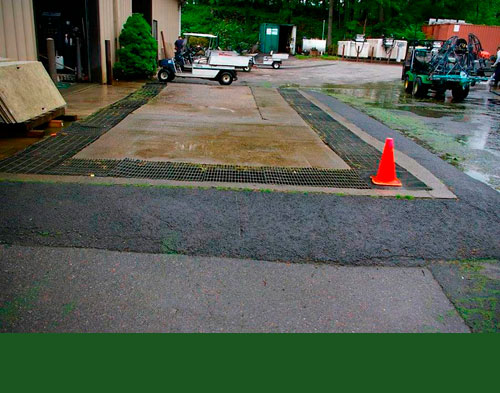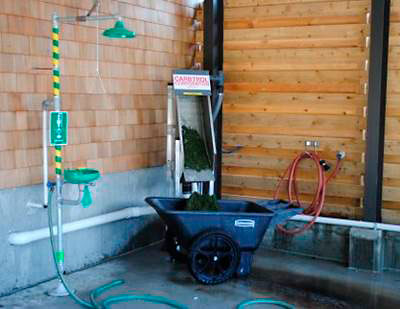 Clippings removal unit. Source: John J. Genovesi, CGCS, Maidstone Club.
Clippings removal unit. Source: John J. Genovesi, CGCS, Maidstone Club.Nutrient BMPs recommend that clipping be widely redistributed to turf. Research has shown that nitrate levels in leachate increased to as much as 30 mg/L in areas that received four times the normal clippings return. Some clubs elect to collect clippings from fairways and then dump these clippings as yard waste. The accumulation of clippings and other yard wastes such a leaves, tree limbs, and other plant debris can be a substantial source of contamination to surface water and groundwater if placed close to water courses.
Clippings should be screened and collected when cleaning equipment in the maintenance area. They should not be allowed into the stream of wastewater. The inherent concentration of organic nitrogen and phosphorus, along with any pesticide residues, can contaminate the wastewater or reduce the effectiveness of wastewater treatment equipment. Ideally, clippings should be blown off using compressed air and then collected. If water is being used, sumps should screen and convey clippings and other solids prior to wastewater disposal or treatment.
Many clubs have contracted with local composting companies to haul their organic waste. Material is generally accumulated in dumpsters and then frequently removed.
